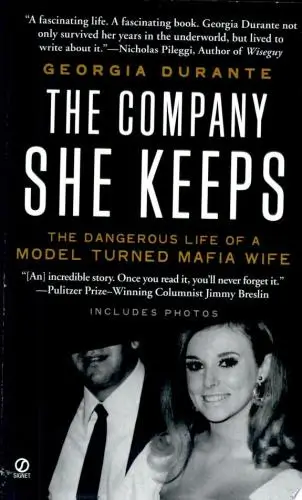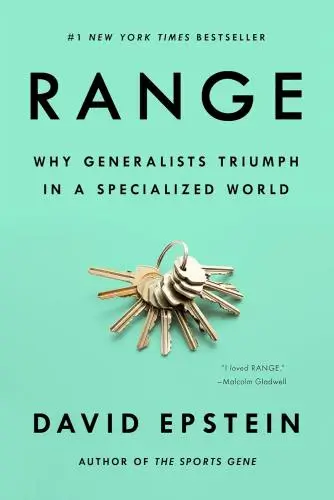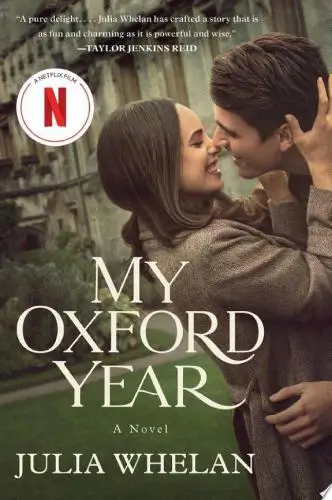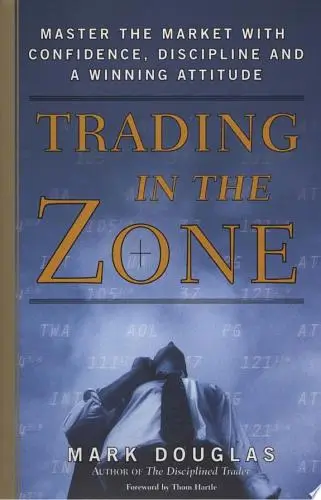StrengthsFinder 2.0
What's it about?
StrengthsFinder 2.0 helps you identify and maximize your strengths for personal and professional success. Through an online assessment, you'll discover your top five strengths and learn how to leverage them to excel in your career. This book emphasizes the importance of focusing on what you do best, rather than trying to fix your weaknesses. With practical advice and real-life examples, StrengthsFinder 2.0 is a must-read for anyone looking to unlock their full potential.
About the Author
Gallup is a global analytics and advice firm that specializes in delivering insights on human behavior and organizational performance. Known for its rigorous research methods, Gallup offers unique perspectives on employee engagement, leadership, and well-being. Its work spans various industries, providing actionable data to help organizations make informed decisions.
10 Key Ideas of StrengthsFinder 2.0
Discover Your Top Five Strengths and Invest in Them
Identify your top five strengths by taking the StrengthsFinder assessment.
Once identified, focus on developing these strengths further rather than spending excessive time improving your weaknesses.
This approach is based on the principle that investing in your natural talents yields more significant returns in productivity and satisfaction.
By understanding and leveraging what you naturally excel at, you can achieve greater success and fulfillment in both personal and professional endeavors.
Learn DeeperTake the StrengthsFinder assessment: Start by taking the StrengthsFinder assessment to identify your top five strengths. This is a crucial first step in understanding what you naturally excel at.
Set specific goals related to your strengths: Once you know your strengths, set personal and professional goals that align with them. For example, if one of your strengths is 'Strategic Thinking,' you might set a goal to lead a project planning session at work.
Seek out opportunities to use your strengths daily: Look for tasks, projects, or hobbies that allow you to leverage your strengths. The more you use them, the more developed they will become.
Ask for feedback: Regularly ask colleagues, friends, or mentors for feedback on how you're using your strengths. This can provide valuable insights into how you can further refine and apply your strengths.
Invest in strength-building resources: Consider books, courses, or coaching that focus specifically on enhancing your identified strengths. This targeted investment can accelerate your growth and proficiency.
- Example
If one of your top strengths is 'Empathy,' you could volunteer as a mentor or counselor, providing a practical outlet to use and develop this strength in real-life situations.
- Example
For someone whose strength is 'Analytical,' participating in data analysis projects or joining a study group focused on research methods can offer hands-on experience to sharpen this skill.
Set Specific Goals Aligned with Your Strengths
After identifying your strengths, set specific, measurable, achievable, relevant, and time-bound (SMART) goals that align with these strengths.
This alignment ensures that you are working towards objectives that not only capitalize on your natural abilities but also motivate and engage you.
Setting goals based on your strengths allows for a more efficient and effective path to achievement, as you are more likely to be passionate and persistent when pursuing goals that resonate with your core talents.
Learn DeeperIdentify Your Strengths: Start by taking a strengths assessment, such as the CliftonStrengths assessment, to gain a clear understanding of your top strengths. Reflect on past successes and feedback from others to further identify your strengths.
Set SMART Goals: Once you know your strengths, set goals that are Specific, Measurable, Achievable, Relevant, and Time-bound. Ensure these goals align with your identified strengths to leverage your natural abilities.
Create a Plan of Action: Break down your goals into smaller, manageable tasks. Assign deadlines and prioritize tasks based on their alignment with your strengths. This will help you maintain focus and momentum.
Seek Feedback and Adjust: Regularly review your progress towards your goals and seek feedback from mentors or peers. Be open to adjusting your goals and strategies based on what you learn about your strengths and challenges.
- Example
If one of your strengths is strategic thinking, you might set a goal to develop a new business strategy for your company within the next quarter. You would break this down into researching market trends, analyzing competitor strategies, and brainstorming innovative approaches, all tasks that play to your strategic thinking ability.
- Example
For someone with a strength in empathy, a goal could be to improve team morale and performance over the next six months. This could involve setting up regular one-on-one meetings with team members to understand their concerns, organizing team-building activities, and advocating for their needs with upper management.
Seek Roles That Match Your Strengths
Actively seek out roles, whether in your current job or new opportunities, that match your identified strengths.
Positions that allow you to use your strengths daily will likely lead to higher job satisfaction, engagement, and performance.
When your work aligns with your natural talents, you're more inclined to excel and find meaning in what you do, which can lead to career advancement and personal growth.
Learn DeeperReflect on Your Strengths: Take some time to really think about what you're good at. This could involve taking assessments like StrengthsFinder, asking for feedback from colleagues or friends, or simply reflecting on tasks that make you feel energized and competent.
Research Roles and Industries: Once you have a clear idea of your strengths, start researching roles and industries where those strengths are in high demand. Look for job descriptions that align with what you're good at and passionate about.
Tailor Your Resume and Cover Letter: When applying for jobs, tailor your resume and cover letter to highlight how your strengths make you the perfect fit for the position. Use specific examples from your past experiences to demonstrate your capabilities.
Prepare for Interviews: In interviews, be ready to talk about your strengths confidently. Prepare examples of how you've used your strengths in previous roles to achieve success. This will help employers see the value you can bring to their team.
Seek Continuous Growth: Even after you've found a role that matches your strengths, continue to seek opportunities for growth and development. This could mean taking on new projects, pursuing further education, or seeking mentorship within your industry.
- Example
If one of your strengths is creative problem-solving, you might look for roles in innovation management or product development, where you can use your creativity to overcome challenges and develop new solutions.
- Example
If you excel at empathetic communication, consider roles in customer service, counseling, or human resources, where your ability to understand and respond to others' needs can be a major asset.
Build Strong Relationships by Understanding Others' Strengths
Use the knowledge of your strengths to build stronger relationships with colleagues, friends, and family by recognizing and appreciating their unique strengths.
This understanding fosters better communication, teamwork, and mutual respect.
By focusing on what each person does best, you can create more productive and harmonious relationships and teams.
Learn DeeperIdentify Your Strengths: Start by taking a strengths assessment, such as the one offered in 'StrengthsFinder 2.0', to gain a clear understanding of your own strengths. This self-awareness is the first step in recognizing and valuing the strengths of others.
Encourage Open Conversations About Strengths: In your next team meeting or family gathering, propose a discussion about each person's strengths. This can be a fun and enlightening activity that helps everyone understand and appreciate the diverse talents within the group.
Assign Roles Based on Strengths: Whether you're working on a project at work or planning a family event, try to assign tasks and roles based on individuals' strengths. This not only boosts efficiency but also increases satisfaction and engagement.
Celebrate Strengths Regularly: Make it a habit to acknowledge and celebrate when someone uses their strengths effectively. This could be through a simple compliment, a note of thanks, or public recognition in a team meeting. Positive reinforcement encourages the continued use of strengths.
- Example
In a project team setting, if someone has a strength in strategic thinking, you might assign them to lead the planning phase of the project. Meanwhile, someone with a strength in executing tasks could take charge of the implementation phase.
- Example
During a family reunion, if a family member is known for their strength in communication, they could be tasked with coordinating and disseminating information about the event. Another family member with a strength in hospitality could lead the hosting and arrangements.
Develop Strategies to Address Your Weaknesses
While the focus should be on your strengths, it's also important to develop strategies to manage your weaknesses.
This doesn't mean trying to turn weaknesses into strengths but rather finding ways to mitigate their impact.
This could involve delegating tasks that fall into your areas of weakness, partnering with others who have complementary strengths, or using tools and systems to help compensate for these weaknesses.
Learn DeeperIdentify Your Weaknesses: Start by taking an honest inventory of your areas of weakness. This could be tasks you find challenging, skills you lack, or activities that drain your energy.
Seek Feedback: Ask for feedback from colleagues, friends, or mentors to gain a broader perspective on your weaknesses and how they might impact your work or personal life.
Delegate Tasks: If certain tasks fall squarely in your areas of weakness, try to delegate them to others who possess strengths in those areas. This allows you to focus on what you do best.
Partner Up: Look for opportunities to collaborate with individuals whose strengths complement your weaknesses. This partnership can lead to more effective and efficient outcomes.
Leverage Tools and Systems: Use technology or develop systems that can help compensate for your weaknesses. For example, if staying organized is a challenge, use project management software or apps designed to help with organization.
Set Realistic Goals: Work on improving your weaknesses in a realistic manner. Instead of aiming for perfection, focus on making incremental improvements that can gradually reduce the impact of your weaknesses.
- Example
If you're not great at detail-oriented tasks like data analysis, you could partner with a colleague who excels in these areas for projects that require a high level of detail. Together, you could produce more accurate and comprehensive results.
- Example
For someone who struggles with public speaking, instead of trying to become a top speaker overnight, they could use tools like presentation software to create engaging visuals that support their message, reducing the pressure to perform perfectly and allowing them to communicate more effectively.
Deeper knowledge. Personal growth. Unlocked.
Unlock this book's key ideas and 15M+ more. Learn with quick, impactful summaries.
Read Full SummarySign up and read for free!
StrengthsFinder 2.0 Summary: Common Questions
Experience Personalized Book Summaries, Today!
Discover a new way to gain knowledge, and save time.
Sign up for our 7-day trial now.
No Credit Card Needed

Similar Books

The Company She Keeps
Georgia Durante
The Millionaire Fastlane
MJ DeMarco
Losing My Virginity
Richard Branson
Crush It!
Gary Vaynerchuk
The Go-Giver
Bob Burg
Flow
Mihaly Csikszentmihalyi
Range
David Epstein
The Invisible Game
Zoltan Andrejkovics
Mastery
Robert Greene
How Will You Measure Your Life?
Clayton M. ChristensenTrending Summaries

Peak
Anders Ericsson
Never Split the Difference
Chris Voss
Smart Brevity
Jim VandeHei
The Psychology of Money
Morgan Housel
The First 90 Days
Michael D. Watkins
Atomic Habits
James Clear
Thinking, Fast and Slow
Daniel Kahneman
The Body Keeps the Score
Bessel van der Kolk M.D.
The Power of Regret
Daniel H. Pink
The Compound Effect
Darren HardyNew Books

The Art of Spending Money
Morgan Housel
$100M Offers
Alex Hormozi
A Candle for Kiri
Edna Mae Holm
Principles of Marketing, Global Edition
Gary Armstrong
Serpent Rising: The Kundalini Compendium
Neven Paar
Feeling Is the Secret
Neville Goddard
The 100 Best Business Books of All Time
Jack Covert
My Oxford Year
Julia Whelan
Trading in the Zone
Mark Douglas

